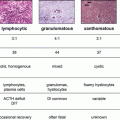(1)
Division of Cardiology, University of California, San Francisco, 1001 Potrero Ave, Room 5G1, San Francisco, CA 94110, USA
Keywords
LDL-apheresis therapyRefractory familial hypercholesterolemiaAutosomal codominantGeneticLDL receptorsClear serum LDL cholesterolFH patientsHomozygous patientsObjectives
1.
To understand the pathophysiology, clinical presentation, and treatment of familial hypercholesterolemia.
2.
To recognize the role of LDL-apheresis in the treatment of refractory severe hypercholesterolemia.
Case Presentation
A 53-year-old woman presents with a history of premature coronary artery disease (CAD) and severe hypercholesterolemia. She experienced a myocardial infarction (MI) at the age of 37 years old. At that time her total cholesterol (TC) was above 400 mg/dL and her LDL cholesterol (LDL-C) was above 300 mg/dL. She was first started on atorvastatin but developed severe transaminitis requiring discontinuation. She was next treated with simvastatin and then lovastatin but both statins caused similar elevations in her liver enzymes. Subsequent trials of pravastatin and then low dose rosuvastatin resulted in severe myalgias and leg weakness that prompted discontinuation. At 42 years old, she presented with recurrent chest pain and found to have re-stenosis of her coronary stent in her left anterior descending artery (LAD) requiring repeat coronary stenting. With her statin intolerance and continued elevations in her LDL-C above 300 mg/dL, she was started on ezetimibe and colesevelam. Six years later, she presented with recurrent chest pain, found to have diffuse 3-vessel CAD on cardiac catheterization, and underwent coronary artery bypass grafting (CABG).
She has a family history of premature CAD and severe hypercholesterolemia. Her father died suddenly at the age of 45 years old; presumed due to sudden cardiac death (SCD) from an acute MI. She has two brothers, both of whom have elevated LDL-C above 300 mg/dL and have had MIs in their late 30s.
Her physical exam reviewed normal blood pressure and heart rate. Her body mass index (BMI) was 32 kg/m2. She had corneal arcus and tendon xanthomas located on her hands. Her lipid profile showed a TC 408 mg/dL, LDL-C 285 mg/dL, high-density lipoprotein cholesterol (HDL-C) 42 mg/dL, and triglycerides (TG) 157 mg/dL. Her thyroid function and liver laboratories were within normal limits.
After placement of a central venous catheter, she was started on LDL-apheresis. Immediately post-LDL-apheresis, her lipid panel showed TC 125 mg/dL, LDL-C 51 mg/dL, TG 140 mg/dL, and HDL-C 39 mg/dL. For the past 5 years she has had twice monthly LDL-apheresis. She has not had recurrence of chest pain nor required additional coronary interventions since the initiation of LDL-apheresis.
How the Diagnosis Was Made
Familial hypercholesterolemia (FH) is an autosomal codominant genetic condition characterized by absent or defective hepatic LDL receptors [1, 2]. Given that LDL receptors function to clear serum LDL cholesterol, FH patients have severely elevated cholesterol levels. More than 1,500 mutations have been identified in the LDL receptor gene that alter the production, delivery, or function of the LDL receptor. In heterozygous FH patients who have inherited a genetic defect from one parent, they have total cholesterol in the 300–500 mg/dL range and have a prevalence of 1 in 300–500 people. Homozygous FH patients who inherited two abnormal genetic defects from both parents generally have total cholesterol above 500 mg/dL and have a prevalence of 1 in a million people. Due to the severely elevated cholesterol levels, untreated heterozygous FH patients have early diagnosis of symptomatic atherosclerotic heart disease between 30 and 50 years old, while homozygous patients can present with clinical cardiac events in their first decade of life.
Since genetic testing does not change clinical management and the known receptor mutations are not present in 20 % of cases, FH can be diagnosed clinically by identifying a severely elevated LDL-C level and a family history of hypercholesterolemia and premature CHD in a first degree relative. Secondary causes of elevated cholesterol must be excluded such as severe liver disease, hypothyroidism, and renal disease. The diagnosis can be supported by the presence of characteristic physical exam findings including early onset corneal arcus less than 40 years old, and tendon xanthomas located in the Achilles tendon and tendons of the hand. Though helpful if present, the absence of these exam findings does not rule out a diagnosis of FH. Once a patient is diagnosed with FH, cascade screening of all first-degree relatives is recommended by testing cholesterol levels.
Cholesterol therapy is paramount to lowering the very high lifetime risk for CHD in FH patients [3]. Statins are the recommended first line agents with dose titration to achieve a LDL-C goal of <160 mg/dL for all FH patients and <100 mg/dL for higher risk patients with established atherosclerotic cardiovascular disease or multiple CHD risk factors. In patients not reaching these goals with statins or who have significant statin intolerance, alternative cholesterol lowering therapies including niacin, bile acid binders, and ezetimibe can be considered [4].
Stay updated, free articles. Join our Telegram channel

Full access? Get Clinical Tree




